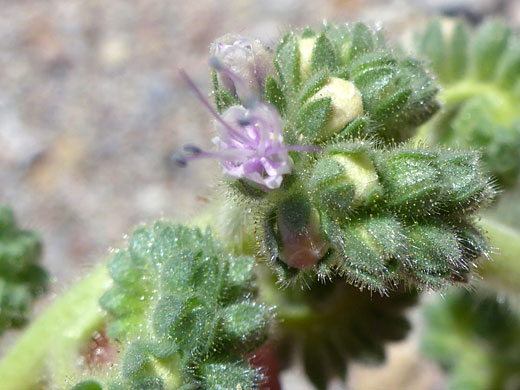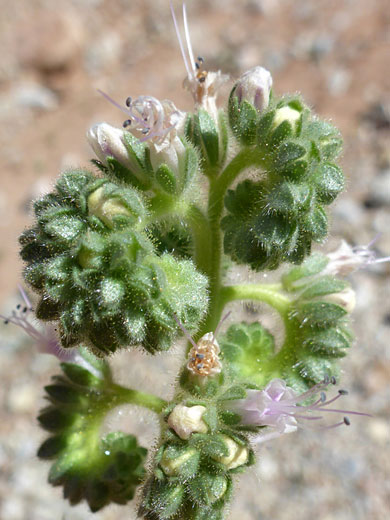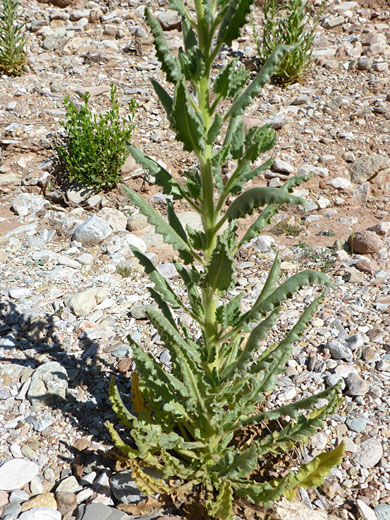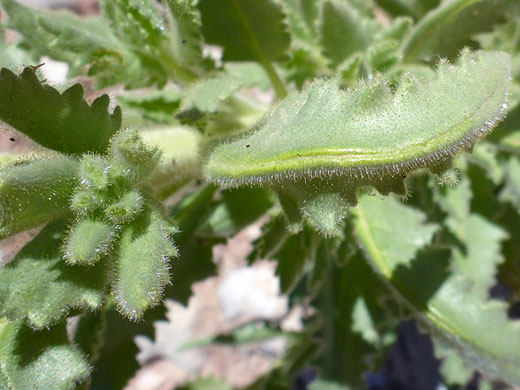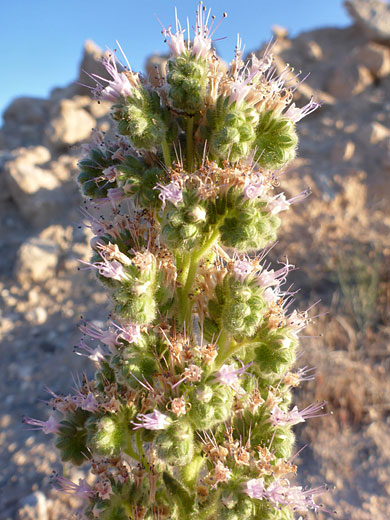Common name:
Palmer's phacelia
Family:
Scientific name:
Phacelia palmeri
Main flower color:
Range:
South Nevada, northwest Arizona and southwest Utah
Height:
Up to 4 feet
Habitat:
Open, sandy or gravelly places, between 3,000 and 6,000 feet
Leaves:
Lanceolate, up to 10 inches long, with shallowly toothed edges
Season:
April to May
Phacelia palmeri has a limited distribution in desert areas, found mainly across a 40 mile-wide area in far southwestern Utah, and less commonly in nearby regions of the two adjacent states. Plants are biennials, growing a tall stem (up to 4 feet) during the first year then flowering in the second. Leaves are produced at closely-spaced, opposite intervals, most densely around the base, but also all the way to the top of the stem, which is thick, rigid, and usually unbranched. Leaves and stems are covered by spreading, prickly hairs.
The inflorescence is a series of one-sided clusters, initially coiled, then straightening and lengthening. Only a few flowers are in bloom at any one time. Flowers have five broad, hairy, ovate to lanceolate sepals enclosing a relatively narrow, pale pink, cup-shaped, five-lobed corolla, with exserted style and stamens. Buds are pale cream colored.
The inflorescence is a series of one-sided clusters, initially coiled, then straightening and lengthening. Only a few flowers are in bloom at any one time. Flowers have five broad, hairy, ovate to lanceolate sepals enclosing a relatively narrow, pale pink, cup-shaped, five-lobed corolla, with exserted style and stamens. Buds are pale cream colored.
All Contents © Copyright The American Southwest | Comments and Questions | Contribute | Site Map


